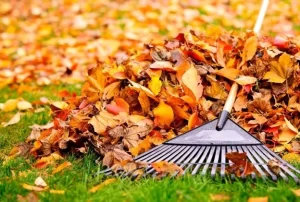A beautiful yard starts from the ground up—literally. Whether you’re a seasoned gardener or a first-time homeowner, maintaining healthy grass and nutrient-rich soil is key to having a lush, vibrant outdoor space. Good yard maintenance not only boosts your home’s curb appeal but also contributes to the long-term health of your lawn and landscape.
In this comprehensive guide, we’ll cover effective yard maintenance tips that promote healthy grass and soil. From mowing techniques and watering schedules to soil testing and fertilizing, these expert-approved practices will help you create and maintain a thriving yard.

Simple Yard Maintenance Steps for a Healthier Lawn
1. Understand Your Soil Type
Before diving into any yard maintenance tasks, you need to get to know your soil. Soil is the foundation of your lawn’s health—it holds nutrients, retains moisture, and supports root growth.
How to Identify Your Soil Type:
- Clay Soil: Dense and slow-draining; often sticky when wet.
- Sandy Soil: Light and gritty; drains quickly but may lack nutrients.
- Loamy Soil: Ideal for grass; a balanced mix of sand, silt, and clay.
Tip:
Perform a simple squeeze test—moisten a handful of soil and squeeze it in your palm. If it crumbles easily, it’s loamy. If it stays in a tight ball, it’s clay.
2. Test Your Soil’s pH and Nutrients
Healthy soil = healthy grass. Soil testing helps you know exactly what your yard needs.
What a Soil Test Tells You:
- pH level (ideal is 6.0–7.0 for most grasses)
- Nutrient deficiencies (nitrogen, phosphorus, potassium)
- Organic matter content
How to Test:
Use a home soil test kit or send a sample to your local agricultural extension office. Based on the results, you can apply the right fertilizers or soil amendments.
3. Aerate Your Lawn
Over time, foot traffic, mowing, and weather can compact your soil, making it harder for air, water, and nutrients to reach the grass roots. Aeration loosens the soil and improves drainage.
When to Aerate:
- At least once a year, preferably in early spring or fall
- When the grass looks weak or the soil feels hard
Types of Aeration:
- Core Aeration: Removes small plugs of soil (best option)
- Spike Aeration: Punches holes into the soil (less effective)
4. Mow at the Right Height
Mowing isn’t just about looks—it directly affects your lawn’s health. Cutting grass too short weakens the root system and makes your yard more prone to weeds.
Best Practices for Mowing:
- Follow the one-third rule: never cut more than one-third of the grass blade at once.
- Adjust your mower height based on the grass type (2.5–3.5 inches for most lawns).
- Keep mower blades sharp to avoid tearing grass.
Bonus Tip:
Leave grass clippings on the lawn! They act as natural fertilizer and return nutrients to the soil.
5. Follow a Proper Watering Schedule
Watering your lawn correctly is crucial for deep root growth and healthy grass. Both under-watering and over-watering can cause problems.
Watering Tips:
- Water early in the morning to minimize evaporation.
- Aim for 1 to 1.5 inches of water per week (including rainfall).
- Deep, infrequent watering is better than daily shallow watering.
Signs of Overwatering:
- Mushy soil
- Fungal growth
- Shallow root systems
6. Fertilize Wisely
Fertilizing provides essential nutrients to your grass and helps build strong, green growth. But using the wrong type or applying too often can do more harm than good.
How to Fertilize:
- Use slow-release fertilizers for steady nutrient supply.
- Apply based on your soil test results.
- Fertilize in the spring and fall for cool-season grasses, or late spring through summer for warm-season grasses.
Natural Fertilizer Option:
Compost is a fantastic organic fertilizer that improves soil structure and feeds beneficial microbes.
7. Control Weeds Naturally
Weeds not only look messy—they also compete with your grass for sunlight, water, and nutrients. The best defense is a strong, healthy lawn.
Natural Weed Control Methods:
- Hand-pull weeds regularly.
- Use mulch in garden beds to block sunlight from reaching weed seeds.
- Apply corn gluten meal as a natural pre-emergent herbicide.
Avoid using chemical herbicides too frequently, as they can harm soil health and beneficial insects.
8. Mulch and Compost for Soil Enrichment
Mulching and composting are key parts of yard maintenance that improve soil health without chemicals.
Benefits of Mulching:
- Retains soil moisture
- Regulates soil temperature
- Prevents weed growth
Use organic mulch like shredded bark, grass clippings, or leaves.
Composting Basics:
- Combine green (food scraps, grass) and brown (leaves, paper) materials.
- Keep the pile moist and turn it regularly.
- Apply finished compost to garden beds and lawn areas.
9. Reseed Bare Patches
Bald spots in your yard are more than just eyesores—they invite weeds and erosion. Reseeding helps restore full coverage and thick growth.
Reseeding Steps:
- Loosen the soil in the bare patch.
- Add compost or enriched topsoil.
- Spread grass seed evenly.
- Lightly water daily until new growth appears.
Choose grass seed that matches your existing lawn and is suitable for your climate.
10. Manage Lawn Thatch
Thatch is a layer of dead grass, roots, and debris that sits between the soil and grass blades. A little thatch is normal, but too much can suffocate your lawn.
How to Check for Thatch:
Dig out a small section of your lawn. If the thatch layer is more than ½ inch thick, it’s time to detach.
Dethatching Methods:
- Use a dethatching rake or machine.
- Do it in early spring or fall.
- Water and fertilize after dethatching to help recovery.
11. Choose the Right Grass for Your Region
Not all grass types thrive in every environment. Selecting the right species for your climate and soil makes yard maintenance much easier.
Common Types:
- Cool-Season Grasses (Kentucky bluegrass, fescue): Thrive in cooler northern climates.
- Warm-Season Grasses (Bermudagrass, Zoysia): Ideal for hot southern regions.
Tip:
Consult local lawn care experts or garden centers to choose a variety suited to your yard’s light levels, moisture, and foot traffic.
12. Create a Yard Maintenance Schedule
Staying consistent with your yard care tasks helps you stay ahead of issues and keeps your lawn in tip-top shape all year long.
Sample Seasonal Breakdown:
Spring:
- Test soil
- Fertilize
- Aerate
- Reseed
Summer:
- Mow weekly
- Water deeply
- Watch for pests and diseases
Fall:
- Fertilize again
- Dethatch or aerate
- Rake leaves
- Apply compost
Winter:
- Avoid heavy traffic on frozen grass
- Clean and store tools
- Plan for spring maintenance
Conclusion: Consistent Yard Maintenance Leads to Lasting Results
Healthy grass and rich soil are the backbone of a beautiful, thriving yard. Yard maintenance doesn’t need to be expensive or time-consuming when done regularly and thoughtfully. By understanding your soil, watering properly, mowing correctly, and feeding your lawn what it needs, you’re giving it the best chance to flourish.
Remember, great lawns aren’t created overnight—they’re the result of consistent care, smart practices, and a little patience. So grab your gloves, fire up your mower, and get started on your journey to a greener, healthier yard today!
Or better yet, let the professionals handle it—contact Hawkins Landscaping Inc. for expert yard maintenance services that make a lasting difference.
For over 50 years, Hawkins Landscaping Inc. has been a trusted name in lawn care, landscaping, hardscaping, and outdoor transformation projects. Our team of seasoned professionals knows what your soil and grass need to thrive in Maryland’s climate. Whether you’re dealing with compacted soil, patchy grass, weed overgrowth, or simply don’t have the time to maintain your yard—we’ve got you covered.
We offer:
- Full-service yard and lawn maintenance
- Soil testing and fertilization plans
- Aeration and dethatching
- Mulching, edging, and seasonal cleanups
- Customized landscaping solutions
With a commitment to quality, sustainability, and customer satisfaction, we turn ordinary yards into exceptional outdoor spaces. We also offer flexible financing options to make expert care more accessible.
📞 Call us today at (301) 898-3615 or visit www.hawkinslandscaping.com to schedule a consultation. We proudly serve Frederick County and the surrounding areas, bringing expert care and creative solutions to every yard we touch.
Trust Hawkins Landscaping Inc.—where your dream yard becomes a reality.




